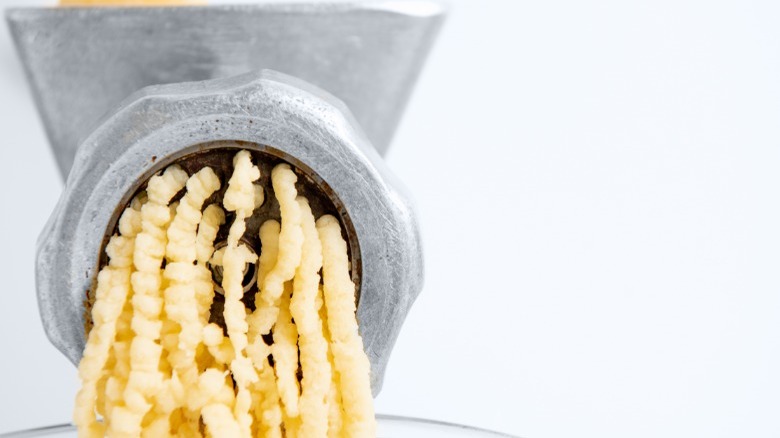The Russian Anthill Cake That Features A Delicious Mix Of Ingredients
Cultures adapt to hardships in many ways, one of which is by altering the foods they prepare to align with the time and ingredients available. In the former Soviet Union people ate plenty of hearty soups and stews, according to Rosetta Stone. These dishes armored against cold temperatures. Fish and caviar were also quite common, as well as pickled vegetables, dumplings, and meats encased in pastry.
Because of food shortages, cooks used whatever they could find in inventive and creative ways. Dishes like Okrashka, a soup made of finely chopped components, managed to disguise the poor quality of the ingredients, per The Calvert Journal. Galantine, a dish of roasted meat served in aspic, became a staple of the Soviet diet that fed the starving hoards of people suffering from the shortages.
Anthill cake, another dish that was born from these circumstances, can be thrown together with a few basic items and is still enjoyed as a nostalgic favorite today, per Atlas Obscura.
Soviet bakers create anthill cake from pantry ingredients
The Soviet era was a lean time for food, but citizens did the best with what they had. Russian anthill cake, or muraveynik, per Russia Beyond, gets its name from its anthill-like shape that's formed from shortbread dough, according to Atlas Obscura. Before shaping it into a mound, the baker runs the dough through a meat grinder, bakes it into cookies, and combines the cookies with sweetened condensed milk.
Back in the heyday of this dish, people used what they had on hand. If it wasn't shortbread, any cookie or biscuit would do. Today, bakers often incorporate butter and decorate the finished product. Russia Beyond reported that most Russian families have their own version of the anthill cake, which some call Russian funnel cake. However, this Soviet dish is baked, rather than fried like a funnel cake. The housewives who scrapped this dish together during times of hardship are credited with its invention, being resourceful in the kitchen while food was scarce, and creating something indulgent during hard times.

